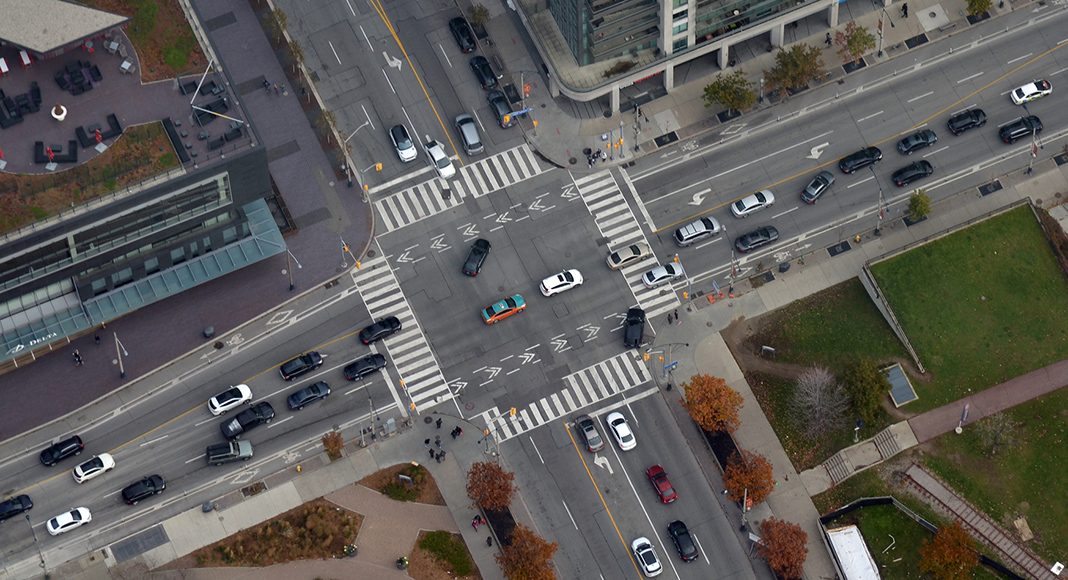Researchers from the University of Toronto’s Faculty of Applied Science & Engineering have found that more than half of drivers at busy intersections fail to make the necessary scans for pedestrians or cyclists at right turns.
The study used eye-tracking equipment to accurately assess where drivers were looking when turning at an intersection.
“There are a lot of visual and mental demands on drivers at intersections, especially in a dense, urban environment like downtown Toronto,” said Nazli Kaya, a master’s candidate in mechanical and industrial engineering who is leading the research under the supervision of Birsen Donmez, an associate professor and Canada Research Chair in Human Factors and Transportation. “Drivers need to divide their attention in several directions, whether it’s other vehicles, pedestrians or road signs and traffic signals – traffic safety instantly becomes a major concern.”
The participants ranged in age from 35 to 54, all with more than three years of driving experience. The drivers were required to make right turns at a signalized four-way intersection, and at an uncontrolled T-intersection leading to a smaller road. Both locations required drivers to safely turn right across a dedicated cycling lane.
Key findings:
- Eleven of the 19 drivers failed to gaze at an area of importance, where cyclists or pedestrians would be located, before turning.
- All attentional failures were related to not making frequent over-the-shoulder checks for cyclists.
- Attentional failures were more likely for those who drove more frequently in downtown Toronto.
- It appeared that drivers less familiar with an area were more cautious when turning.
“The results were quite surprising,” said Donmez. “We didn’t expect this level of attention failure, especially since we selected a group that are considered to be a low crash-risk age group.
“The takeaway for pedestrians and cyclists: Drivers aren’t seeing you. Not necessarily because they’re bad drivers, but that their attention is too divided. When crossing a street, your assumption should be that the car doesn’t see you.”
This research was presented at the Canadian Association of Road Safety Professionals (CARSP) conference.



















